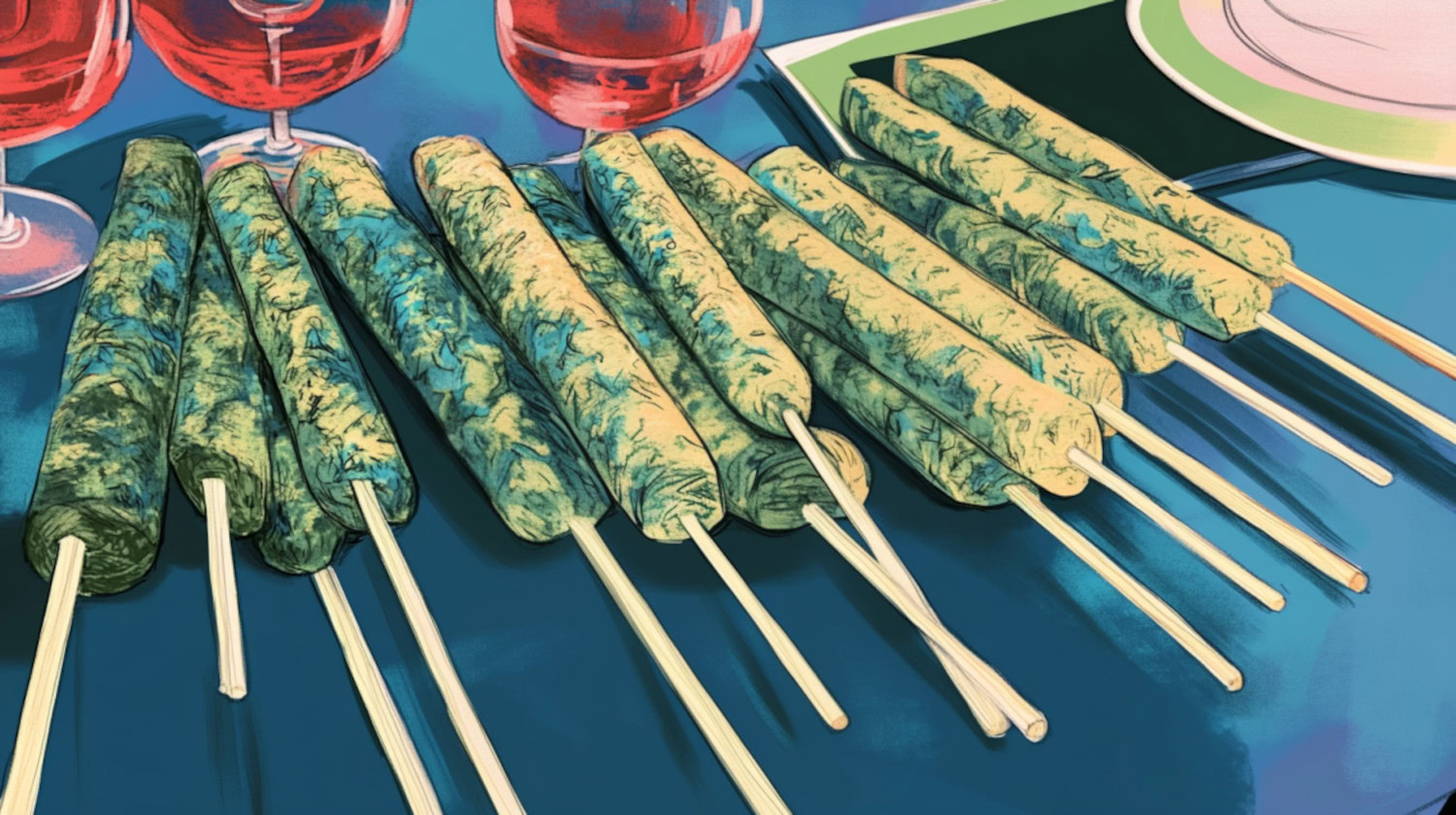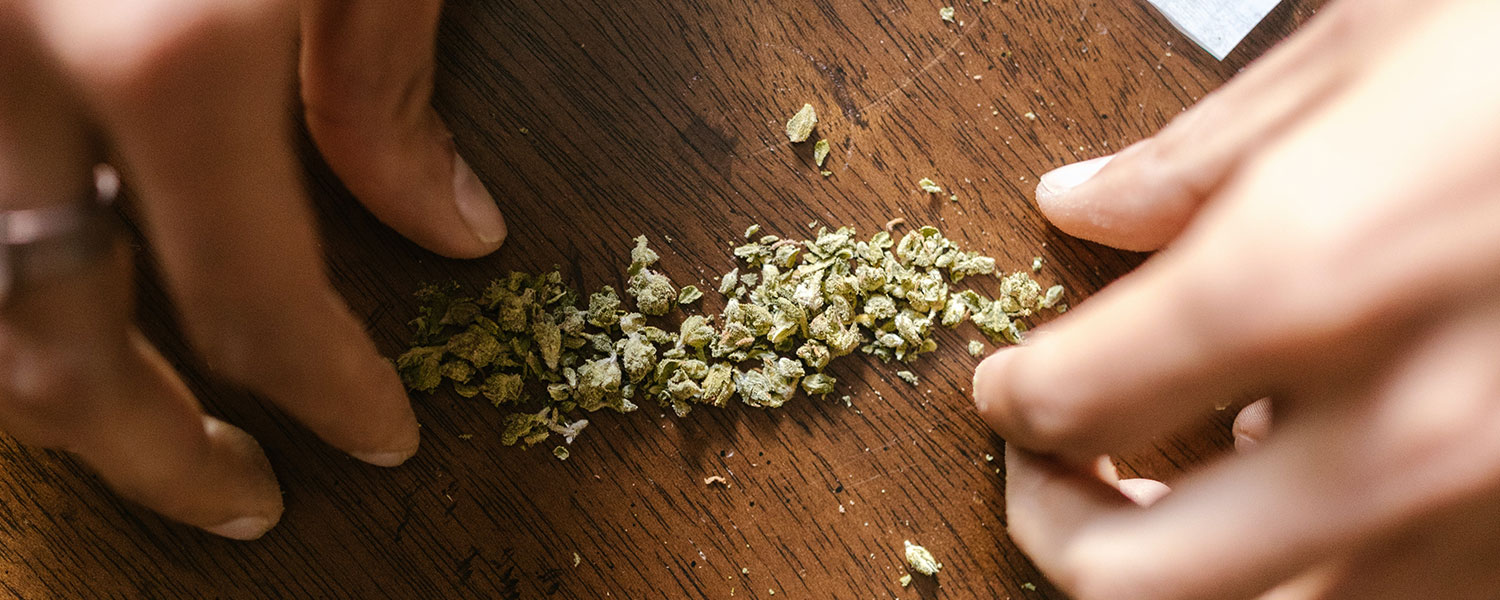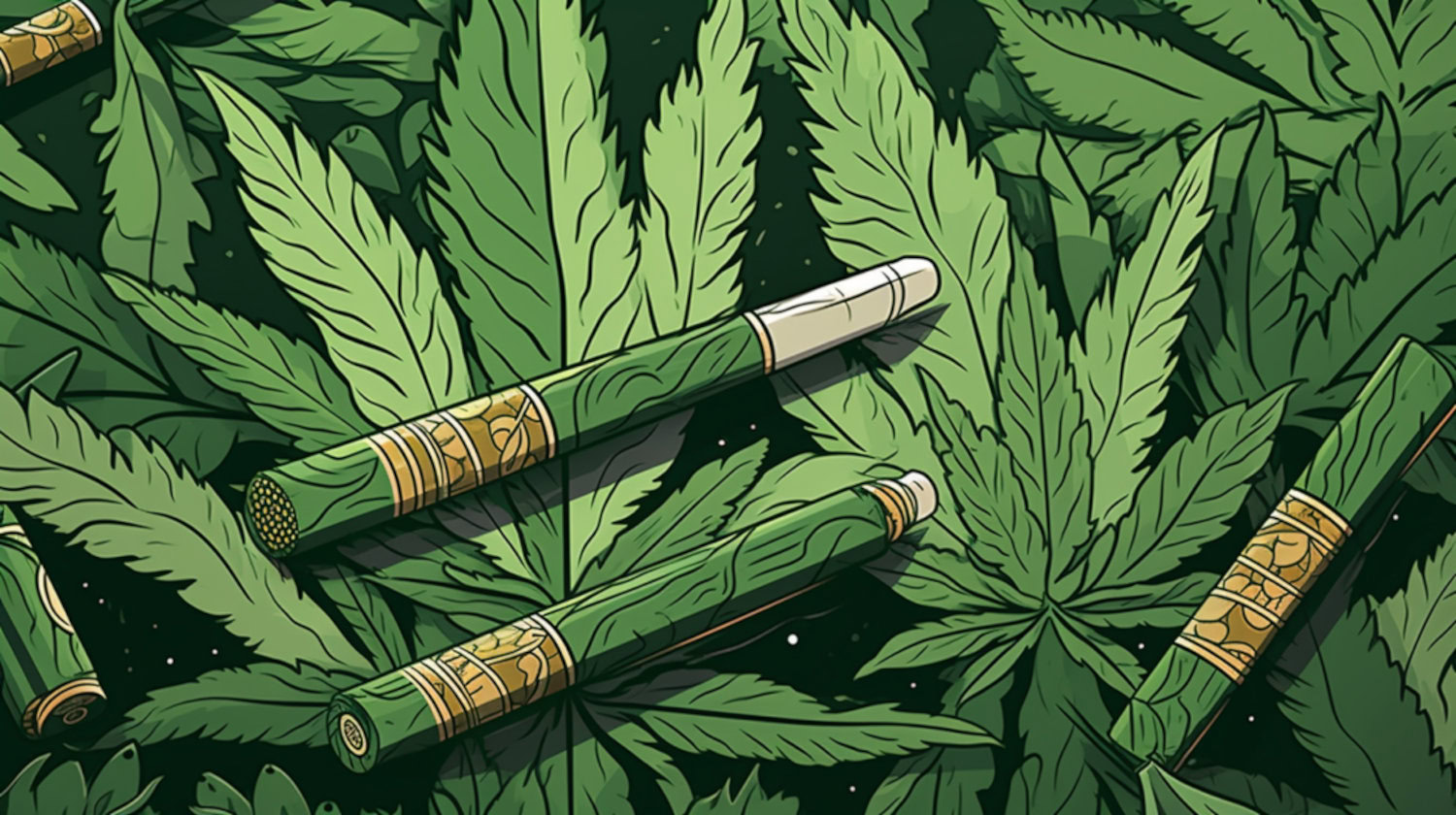In This Article
- What is a Thai Stick?
- What’s in a Thai Stick?
- What’s the Difference Between a Cannagar and a Thai Stick?
- Brief History of Thai Sticks
- How are They Made?
- Can You Still Get a Thai Stick?
- Why Use a Thai Stick?
- How to Use a Thai Stick
- Step 1: Prepare Your Tools
- Step 2: Remove the Skewer
- Step 3: Light the End Evenly
- Step 4: Take Slow, Steady Puffs
- Step 5: Ash Regularly
Key Takeaways
- A Thai stick is a handcrafted cannabis cigar made with layers of cannabis flower, leaves, and resin, offering a slow, smooth burn.
- Thai sticks are made by skewering cannabis flower with a thin stick, securing it with leaves, and curing it for enhanced flavor and potency.
- The unique cannabis cigars are loved for their exceptional quality, long burn time, and unique smoking experience.
Thai sticks are a unique piece of cannabis history, blending artistry and tradition. These handcrafted cannabis cigars first gained fame in the 1970s. Even today, they stand out for their potent effects and intricate preparation.
Made using techniques passed down over generations, Thai sticks continue to intrigue for their old-school charm and rich cultural roots. What is a Thai stick, though? How are they made, and how do consumers use them?
What is a Thai Stick?
A Thai stick is a predecessor to the cannabis "cigars" we know today. Originating in Thailand, Thai sticks consist of cannabis flower wrapped tightly around a bamboo stick, then wrapped with hemp string. These layers are often coated with resin or oils to help them stick together. After wrapping, the stick is typically left to cure for several days or even weeks. This curing process allows the moisture to evaporate and the layers to bond more tightly. The flavors of the flower and resin meld together, resulting in a smoother, slower-burning, more flavorful smoke.
The term "Thai stick" originated as slang during the 1970s to describe these cannabis cigars. Unlike today’s pre-rolls or blunts, Thai sticks are a labor-intensive product steeped in cultural history and prized for their artisanal craftsmanship.
What’s in a Thai Stick?
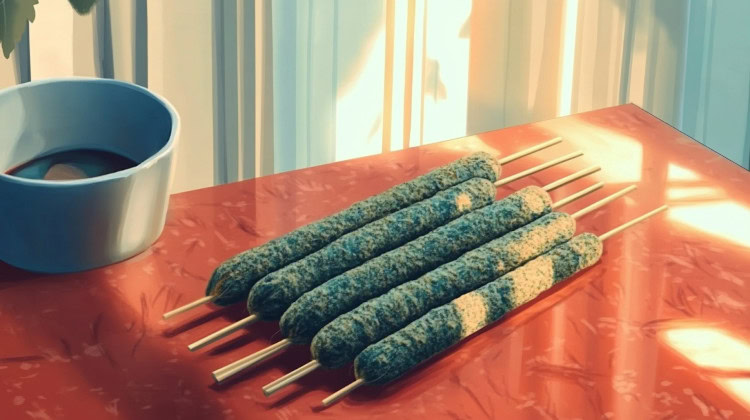
A traditional Thai stick uses high-quality cannabis flower as its core ingredient. This cured flower is skewered on a bamboo or other thin stick to hold its shape. Hemp or cannabis leaves are then used to wrap and secure the flower on the stick. Sometimes, resin or oil is applied to help the layers stick together and enhance potency.
These elements come together to create a slow-burning, potent cannabis cigar unlike any other.
What’s the Difference Between a Cannagar and a Thai Stick?
At first glance, Thai sticks and cannagars may look similar but differ in key ways.
First, cannagars are often infused with concentrates, rolled with modern tools, and designed for smoother draws. On the other hand, Thai sticks rely on more traditional methods and are less likely to include concentrates. They originated in Thailand and are deeply tied to its cannabis history. Cannagars are a modern evolution of the cigar and were first developed in North America.
Cannagars are often rolled fresh and pressed for consistency, while Thai sticks involve curing the cannabis over time.
Lastly, Thai sticks are not often sold in either recreational or medical markets, while cannagars might otherwise be available.
Brief History of Thai Sticks
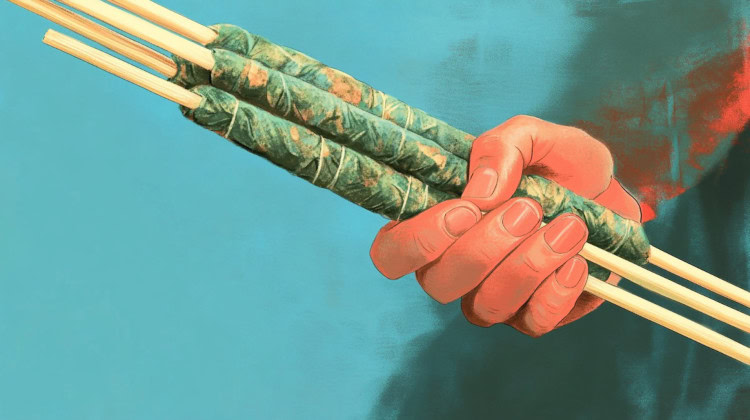
Thai sticks can trace their ancient roots to tribes in northeast Thailand, though the exact time-frame remains a mystery. While they may have origins dating hundreds, if not thousands, of years back, they didn't make their way to the US until the 1970s. Around the time of the Vietnam War, American veterans would smuggle Thai sticks back home. Smugglers often transported them in creative ways, like vacuum-sealing them in fish sauce to mask the scent.
Soon, they became a sought-after export during the height of the counterculture movement. Their rise to fame fizzled in the 1980s when supply chains from Thailand broke down. These supply chains continued to dwindle until the more modern boom in cannabis legalization. Now, these ancient cannabis cigars are making a comeback, though they're often handmade rather than sold in dispensaries.
Thai sticks trace their roots to Thailand, where local farmers crafted them to prepare and enjoy cannabis. These handcrafted cannabis cigars gained international fame in the 1970s when they became a sought-after export to the U.S. during the height of the counterculture movement. They quickly became a favorite as something more sophisticated than a standard joint.
While the original Thai sticks from the ‘70s are a relic of cannabis history, their legacy lives on in products like cannagars. These are similar in design but often incorporate modern innovations like infused oils and precision tools. They blend traditional techniques with modern technology.
Even though modern alternatives exist, some still search for the real thing. Take Puffco founder Jolly Roger, for example, who is on video in Thailand hunting for traditional Thai sticks. The footage offers a glimpse into the craft’s origins and role in Thai cannabis culture.
How are They Made?
Making a Thai stick is a meticulous, hands-on process that sets it apart from other cannabis products.
- Cannabis flowers are ground using tools like weed grinders to achieve the ideal consistency.
- The ground cannabis is tightly packed around a bamboo skewer or similar stick.
- The flower is wrapped in layers of hemp or cannabis leaves, and resin or oils are often used to keep everything in place.
- Finally, the Thai stick is left to cure, sometimes for days or weeks, to allow the layers to bond and create a smoother, flavorful experience.
Can You Still Get a Thai Stick?
Authentic Thai sticks are a rarity in today’s cannabis market. They're typically made at home rather than mass-produced at a dispensary or manufacturing facility.
However, modern options like cannagars offer a similar experience. They combine high-quality cannabis with long-lasting, slow-burning materials.
While Thai sticks might not be available on dispensary shelves, their legacy remains alive in cannabis culture. They're a symbol of craftsmanship and tradition, offering a potent twist to the cannabis we know of today.
Why Use a Thai Stick?
Unlike a regular joint or blunt, a Thai stick burns slower and more evenly. Thai sticks consistently deliver a smoother, longer-lasting smoke. The curing process and use of high-quality cannabis flower enhance the flavor, making them a favorite for some.
Thai sticks stand out for those who value the ritual of preparation as much as the experience itself. The time and care required to create one make it a labor of love, and the result is a smoke that’s as much about the process as the product.
How to Use a Thai Stick
Smoking a Thai stick is a unique experience, but it’s not too different from lighting a blunt or cigar. Some easy steps exist to get the most out of it.
Step 1: Prepare Your Tools
Before lighting up, gather a few essentials. A weed rolling tray can help keep everything organized and prevent messes. Likewise, a sharp pair of scissors or a knife can cleanly remove the skewer. Finally, a lighter or hemp wick helps create an even burn.
Step 2: Remove the Skewer
If the Thai stick still has the skewer or stick in the center, carefully twist and pull it out. This step creates the airflow needed for smooth draws. Be gentle to avoid disrupting the cigar's structure.
Step 3: Light the End Evenly
Like a blunt or cigar, take your time evenly lighting the Thai stick. Rotate it slowly while holding the flame at the tip to ensure an even burn. This step is important for preventing canoeing (uneven burning).
There are also helpful guides on how to roll a blunt for further tips on lighting techniques.
Step 4: Take Slow, Steady Puffs
Thai sticks are known for their slow burn, so there’s no need to rush. Take small, steady puffs to enjoy the flavors and effects at a comfortable pace.
Step 5: Ash Regularly
Because Thai sticks are tightly packed, ash buildup can block airflow. Gently tap the end to remove ash as needed to keep the stick burning smoothly.
The information in this article and any included images or charts are for educational purposes only. This information is neither a substitute for, nor does it replace, professional legal advice or medical advice, diagnosis, or treatment. If you have any concerns or questions about laws, regulations, or your health, you should always consult with an attorney, physician or other licensed professional.

